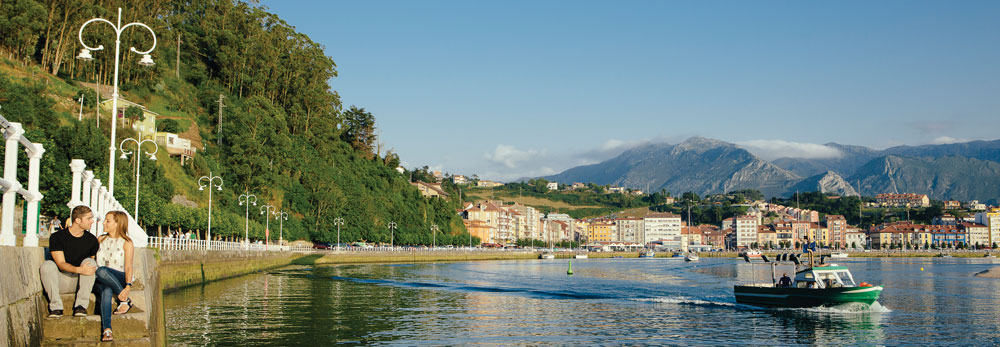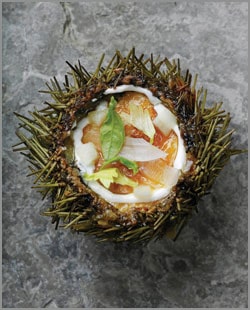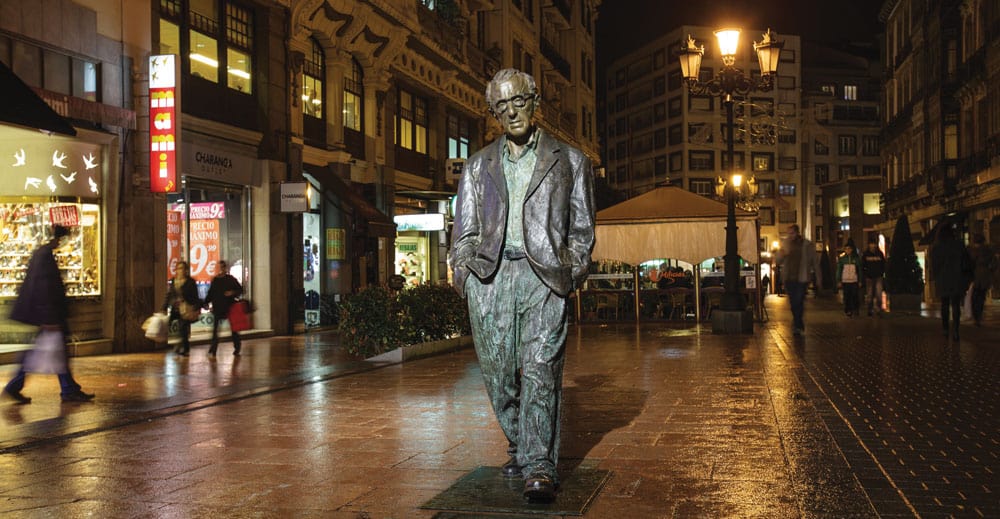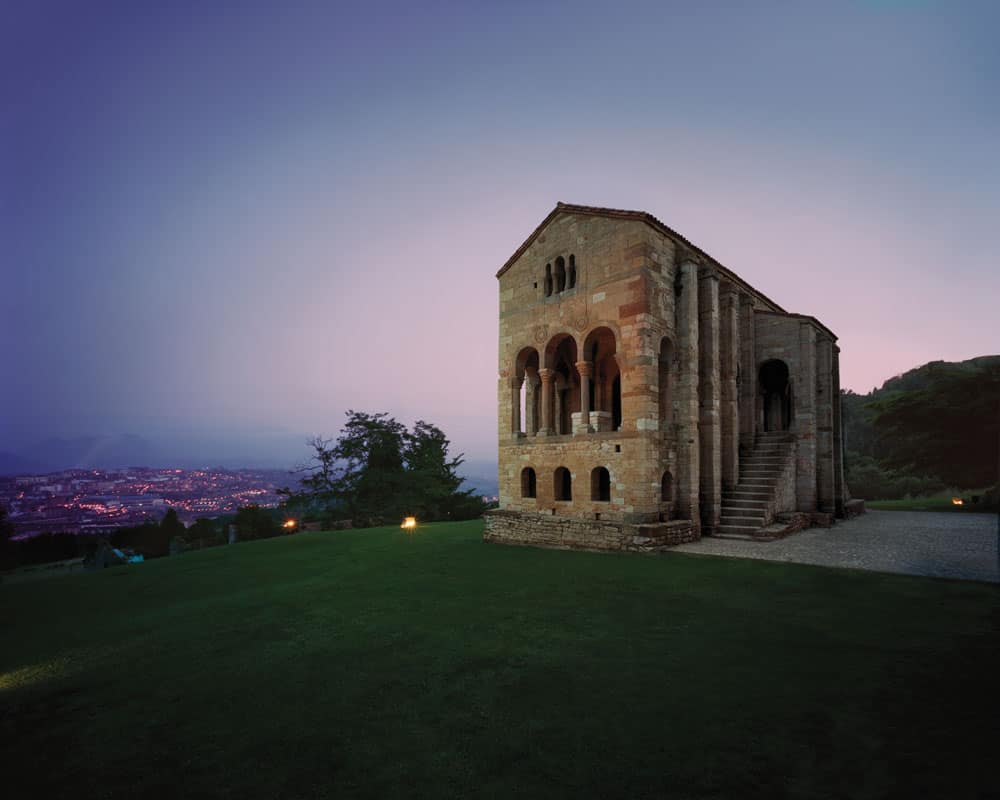Santa Maria of Naranco
Is there a hidden part of Spain? Niamh Mac Sweeney went in search of a less travelled region – and yet somehow felt a genuine connection with home.
We all love that feeling of boarding a plane knowing we are destined to explore vastly different terrain, and that sense of anticipation that comes when embarking on a new adventure. Finding hidden gems that we are convinced no-one else knows about, trying to navigate our way around winding streets and getting lost, sampling new delicacies that can’t be found anywhere else in the world, and that excitement after discovering a landmark that we’ve only read about in guidebooks – these are the elements that make holidays what they are, and what they should be.
When it comes to Spain we are all aware of the sunny holiday resorts and the cultural city breaks. Less well known is the north of Spain, and although it has its fair share of pristine coastlines and a vibrant cultural scene, it is vastly different. It’s rustic, it’s homely; a total juxtaposition to the sunny south, and there is certainly a feeling that this is a region less travelled – but certainly no less adorable.
For those who have already visited the northern part of Spain, you will be well aware of its uniqueness and the many delights this part of the country has to offer. For those who have not, you should probably start now because there is much to see and do, to which its growing popularity as a destination bears testament.
GREEN GRASS OF HOME
Asturias is a region located in the north-west of Spain, and a mere two-hour flight from Dublin to Santander makes it convenient and accessible. From the green mountainous landscape to the warm and friendly cider-dinking people, when you first arrive you will be forgiven for asking: is this Spain or has the plane simply circled Ireland and landed back in Wicklow, Kerry or west Cork?
For those who have done the Spanish section of the Camino de Santiago, you will probably already know the region of Asturias, but for those who haven’t, it’s time to get acquainted. Expect the unexpected and prepare to feel like you’re in a completely different place – but yet somehow still right at home.
Green, fresh, historical, cultural, welcoming and inexpensive are just some of the adjectives that can be used to describe Asturias; unique, picturesque and outstanding could easily be added to the list. Whether it’s Michelin-star or sawdust-on-the-floor establishments you’re looking for, you’re sure to find plenty of high-end and traditional eateries in equal measure here.
For the thrillseeker, there are more mountains to climb then a walker could shake their walking sticks at. And for the history buff, religious sites and medieval architecture are bountiful and certain to hold one’s interest.

THE GOLD TRIANGLE
When visiting Asturias three is the magic number and top of the hit list of places to visit should be Gijón, Oviedo and Llanes.
First stop, and only a short transfer from the airport, brings you eastwards to Llanes. Renowned as the Costa Verde or Green Coast of Spain, Llanes is a quaint town where time has stood still. Remote yet somehow familiar, the food, folklore and fiestas are what set it apart.
Close by, Pancar is a mountaineer’s paradise; its rugged landscape and many walking routes are certain to please those who enjoy being in the great outdoors. Given that the Picos de Europa National Park is in close proximity, it’s easy to see why adventurous folk are drawn to this place. Pancar also has an interesting church that was erected in honour of St Patrick, so if by some remote chance you are pining for home, a visit here would easily dispel any feelings of homesickness.
A GREAT ROMANCE
 The real jewel in the crown of Asturias is Gijón. Walking through this historical centre, one is instantly transported back in time, particularly in Cimavilla – the oldest part of the city. Here, visitors can reminisce among the ruins of the old Roman settlement and take a welcomed step back in time.
The real jewel in the crown of Asturias is Gijón. Walking through this historical centre, one is instantly transported back in time, particularly in Cimavilla – the oldest part of the city. Here, visitors can reminisce among the ruins of the old Roman settlement and take a welcomed step back in time.
You’re sure to find plenty of high-end and traditional eateries in equal measure here
There is an abundance of cultural, historical and architectural marvels in Gijón, but there are plenty of unique things to do in this city as well. A pastry-making course in Aliter Dulcía is a nice way to spend an afternoon, and budding bakers can try their hand at making traditional frixuelos or casadielles in an informal and fun setting.
The Gijón Atlantic Botanical Garden is another place well worth a visit. Spread over 16 hectares, visitors can experience flora and vegetation found in Atlantic areas from a number of perspectives.
Food is never far from any tourist’s mind, and after a busy day exploring Gijón, visitors will easily work up an appetite. Lunch at La Salgar Restaurant is certain to hit the spot. This Michelin-star establishment is a real family affair, with the Manzano clan – Nacho, Olga, Esther and Sandra – true masters of ceremony. Its mix of contemporary versus traditional is expertly executed and the views from the restaurant complement the sights and tastes of what’s on the plate.

SEA BEFORE YOU EAT
A visit to the aquarium in Gijón is a must-see, and with more than 400 species such as otters, stingray, penguins and sharks, visitors get the opportunity to submerge themselves in a truly captivating underwater world. If budgets will allow for an out-of-this-world experience, there’s a dining spectacle with a difference: the aquarium can organise dinner, where your own personal waiter will serve you the most impressive array of seafood dishes.
 There is something very relaxing and therapeutic about being in an aquarium, and with a selection of stunning wines and plates of delicious seafood in tow, a trip to the aquarium can suddenly turn into something very unique and different.
There is something very relaxing and therapeutic about being in an aquarium, and with a selection of stunning wines and plates of delicious seafood in tow, a trip to the aquarium can suddenly turn into something very unique and different.
Think exclusive, think extravagant, think spectacular and you’ll come close to hitting the mark. To have dinner in an aquarium has to be on many people’s bucket lists, and if it isn’t, then it really should be now.
For the thrillseeker, there are more mountains to climb then a walker could shake their walking sticks at. And for the history buff, religious sites and medieval architecture are bountiful
If you’d rather have your dinner without sharks swimming overhead, then go to Restaurant Auga. In Asturias there are numerous famed Michelin-starred restaurants, and much like La Salgar, Restaurant Auga is a fancy, fine-dining affair. Fruits of the sea are in abundance on Auga’s delightful menu. The sea urchins are an acquired taste but the Galician scallops with apple, mushroom and plankton will melt in your mouth. Red mullet, sea bass and hake are all accompanied with tantalising ingredients such as seaweed, citrus and pickled vegetables to give a tasty twist to traditional fare.
If you’ve a hankering for meat then you won’t be disappointed either, as Iberian pork and lamb feature, as do numerous other meat dishes. And if you’re feeling particularly peckish, try the Asturian Fabada – a traditional stew consisting of pork and beans, this hearty feast is guaranteed to satisfy and sustain you.
HOLA OVIEDO
If it’s culture, history and architecture you’re looking for, look no further because Oviedo – the capital city of Asturias – is bursting with character and heritage. Founded in the year 761, Oviedo was the only capital city of a Christian kingdom in the Iberian Peninsula during the 8th and 9th centuries. Today, this dynamic city is contemporary but hasn’t forgotten its past. A visit to the Cathedral of San Salvador and the historical city centre is a must, as are the pre-Romanesque monuments of Santa Maria of Naranco and San Miguel de Lillo, their locations affording expansive views over the city.
Culture vultures flocking to the city of Oviedo will no doubt be thirsty after all their exploring – handy, then, that there are many sidra (or cider) bars in the area. Cider is the traditional drink of Asturias and is considered the regions ‘wine’. Sold in traditional sidrerias, the bartender serves the cider with great drama and showmanship.
Holding a large glass in one hand and a bottle of cider in the other, the bottle is held above the pourer’s head and somehow it expertly falls into the glass below. This pouring method is called escanciar in Spanish, a technique that is said to encourage carbonation and instil a better flavour. Rather than drink a pint of the golden nectar, in Asturias the glass is never filled and therefore its contents must be drank immediately and in one go.
There are many sidrerias around the region of Asturias, where young and old indulge in the tradition of cider drinking at all times of the day and night. Restaurant Cider Bar La Finca is one such establishment among many where fine food and thirst-quenching cider are served with gusto.

PORT OF PLENTY
In between Gijón and Llanes is the wonderfully picturesque town of Ribadesella. This fishing town is home to many well-guarded secret beaches, most of which offer views of the spectacular snow-topped peaks of the Picos de Europa Mountains.
Ribadesella is an easy place to relax and stroll around, but if you’re feeling adventurous then kayaking on the river Sella, treks and biking in the mountains, or surfing on its stunning beaches will certainly get the heart racing. A sleepy town it might be, but you won’t be bored or wanting for things to do. If you have time, a visit to the Tito Bustillo Caves is highly recommended. One of the most important Palaeolithic sites in the world, these caves are a designated World Heritage Site and a showcase for the many objects, tools and wall paintings that have been perfectly restored.
 A GENUINE CONNECTION
A GENUINE CONNECTION
North to south, Asturias is rich, generous and varied. It is a region full of contrasts, and yet it still feels recognisable. The green, mountainous landscape is familiar, the beaches are altogether different but not that dissimilar, and the people are as friendly as you will meet in any part of Ireland.
Asturias is green and it is genuine. From its mighty sea to its impressive mountainous landscape, it is a land where if you dig deep you will find a countryside that boasts scenery that is both varied and encapsulating. You will also find a culture of heritage and tradition that embraces its future – yet still remains sensitive to its ancestry. Warm and welcoming, Asturias is a secret part of Spain waiting to be explored.
Getting there – Ryanair fly Dublin to Santander daily.
Useful links – w: whereisasturias.com / w: turismoasturias.es / w: hiddeninspain.com
Eating out– w: lasalgar.es/web / w: acuario.gijon.es / w: restauranteauga.com/en







